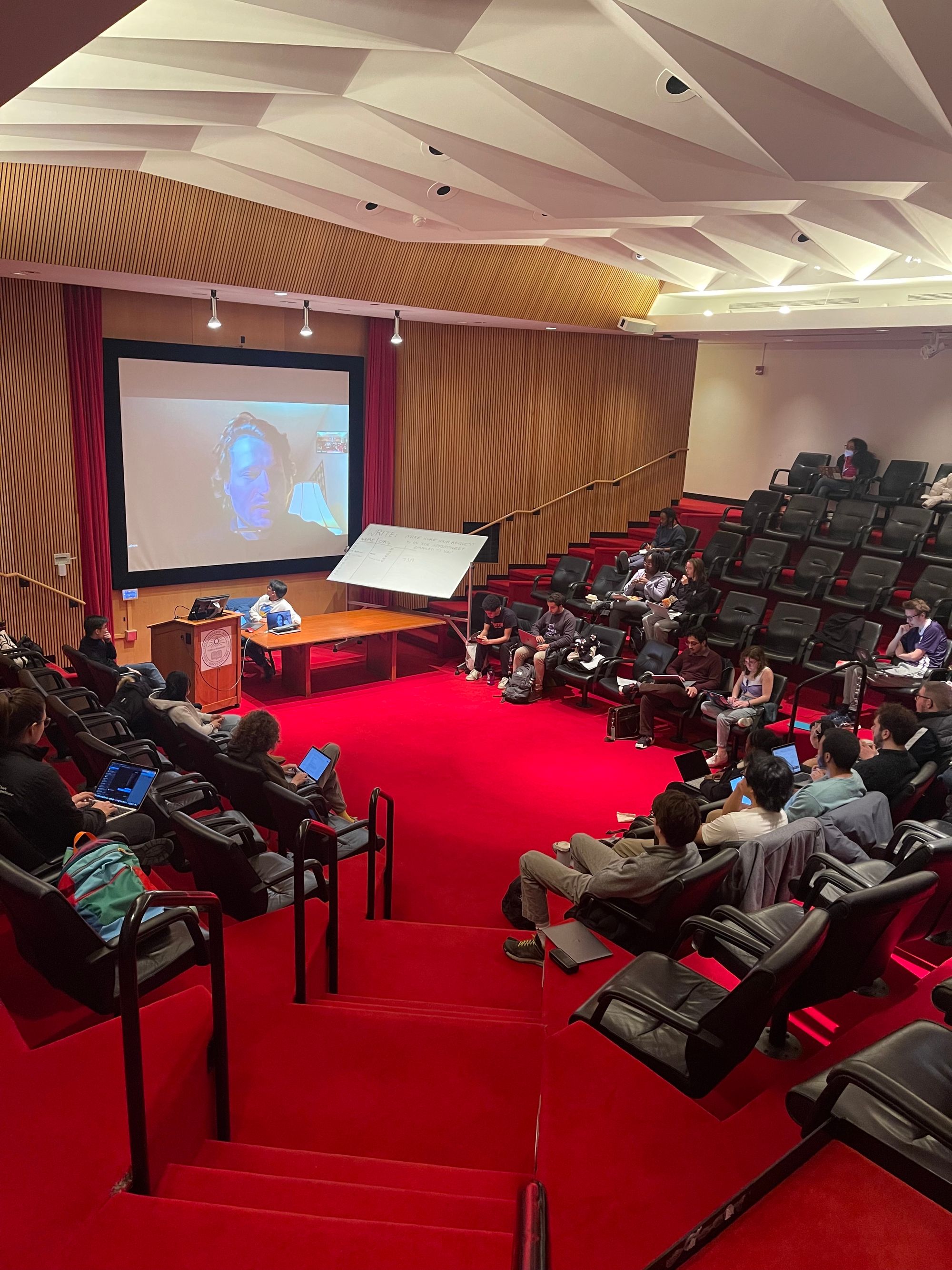AAS Hears Findings on College’s Connections to Slavery
A researcher hired by the college to examine Amherst’s racial history and economic ties to slavery up to and through the 1860s, Mike Jirik, outlined highlights of his findings thus far at the regular meeting of The Association of Amherst Students (AAS) on Feb. 27.

A researcher hired by the college to examine Amherst’s racial history and economic ties to slavery up to and through the 1860s, Mike Jirik, discussed his findings so far at the regular meeting of The Association of Amherst Students (AAS) on Feb. 27.
The project, titled “A Racial History of Amherst College,” was introduced in August 2020 as part of former President Biddy Martin’s anti-racism plan. In the presentation, Jirik outlined highlights of his research, which so far has uncovered the history of Indigenous removal from the lands Amherst occupies and the ties of individual donors to slavery.
In addition to hiring Jirik to direct the project, the college also formed a Steering Committee, co-chaired by Provost and Dean of the Faculty Catherine Epstein and Head of the Archives and Special Collections Mike Kelly. It is staffed by faculty members, students, an external expert, and a representative from the Offices of Advancement; Diversity, Equity, and Inclusion; and Student Affairs.
Jirik began by explaining what he referred to as the “first phase” of the research project, which only included Kelly and a few students. Their research further explored the history of Indigenous removal at Amherst in order to acquire the land where Amherst College is now situated. Kelly shed light on the history of the Octagon, which used to be a church before the land was donated to the college. The owner of the church, Reverend David Parsons, housed enslaved people within it.
The second phase of the project, which began after Jirik joined the research team in September 2022, focused on the research into college donors and their individual ties to slavery. Jirik outlined his discoveries in detail — explaining how multiple donors and founders of the college either held enslaved people or profited from the slave economy at the time. One key example was Samuel Dickinson, grandfather of Emily Dickinson, a founder and significant donor to the college. Samuel Dickinson was invested in a massive cotton mill in the Amherst area, which primarily processed slave-grown cotton from the South.
Furthermore, Jirik mentioned how some buildings on campus are named after individuals with strong ties to slavery. For example, the first-year dorm Williston was named after Samuel Williston — a wealthy donor to the college who made his fortune from slave-grown cotton.

Jirik also referenced findings involving past faculty at the college, including evidence of professors practicing scientific racism and contributing to the theft of indigenous remains for academic purposes. This topic, Jirik said, still requires more in-depth research.
Jirik emphasized that there is still a lot more work that needs to be done, and encouraged students who are interested in helping out with the research to reach out to him.
After Jirik’s presentation, the floor opened for a Q&A. One recurring question was how these findings will be spread among the college and greater Amherst community. Jirik teased an event with the college and Elliott, which will serve to communicate this research to the campus. Jirik couldn’t give any specific details or dates yet.
After the questions closed, AAS President Sirus Wheaton spoke to the Senate about what actions the AAS could take in response to the research. He cited the possibility of contributing to the town of Amherst’s reparation fund if the student activity fee was increased by several dollars.
Wheaton, who has been spearheading the Senate’s push for reparations since the beginning of the year, mentioned that only two other schools in the nation (Harvard and Georgetown) have attempted to do work with reparations, but that Amherst is in a unique position.“We’re lucky enough to have the Amherst town reparation fund already in place,” he said.
“We can do something about making reparations happen even if the college isn’t in full support,” Wheaton said.





Comments ()